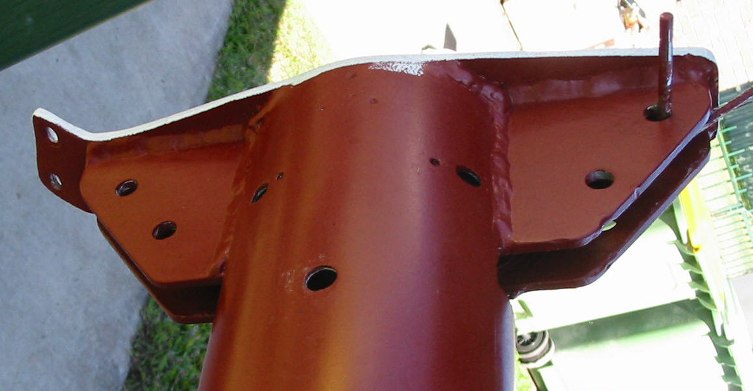There are two chainplates - one either side on the stern. A bridle with legs of about 4ft 6in fits to the turnbuckles attached to the chain plates with the top end shackled to the lower end of the back stay. All turnbuckles have a toggle at each end. The two on the backstay are 8mm and the rest are 10mm. I bought then a few weeks ago from a place near Sydney for A$26.00 each - all 316 grade stainless steel.
While stainless steel on stainless steel is not the best way to go (bronze barrel and stainless threaded pieces is much better) so long as they are well greased with lanolin grease they will be OK. I may make some bronze barrels later on my lathe. It will be a simple job to change them over one at a time later.
I had to make new back stay chainplates and pack them out from the hull because with the belting across the transom, which wasn't there originally, made the old ones's too short. The ladder on the stern folds and telescopes. It came ready made and I made the brackets and wood step that bolts to the transom.

My mast is an oval aluminium tube 51/8 x 4 inches and 1/8inch wall thickness.It is quite heavy but gives good roll dampening. I think most NZ boats used this section - but some may have put in a lighter mast later? My mast would be close to 35 yrs old and has almost no corrosion in it - just some very minor places where a stainless steel fitting has been attached.
The mast head fitting is welded in place and consists of two vertical aluminium plates 20mm apart (3/4inch) which carry the main and jib halyard sheaves and the clevis pins for the fore stay, back stay and topping lift. It has a flat plate welded on top square to the top of the mast. The axles for the mast head sheaves have a flag welded on the ends which have a hole for a screw which is tapped into the mast to stop the pins turning
The fitting has two 2 1/4 inch pulleys between the cheeks, one for each halyard with the tails running down inside the mast. I can't remember why there is a second hole in the forward side of the crane? The outer one is for the forestay - but I don't know what the inner one is for? It does look like the 2 plates that make up the mast head fitting on my mast are the same both ways - that way someone would not be able to weld them up the wrong way round. (click here for a large view with explanations of the various fitting holes
Regards
Alan
Click here to go to Blue Gum
